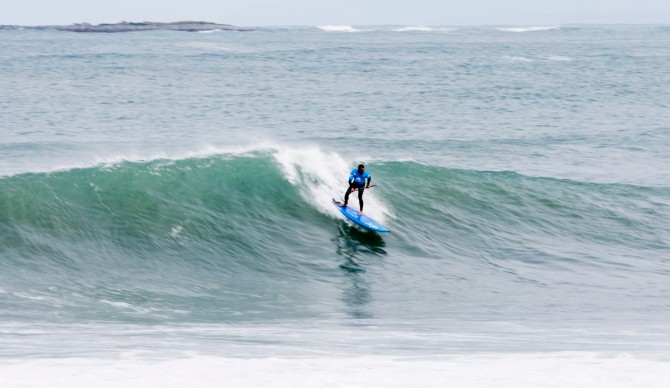
Photo: ESPN/Peggy Sirota
Stand up paddle boarding might seem new in the outdoor sports circuit but it’s actually been around for thousands of years. Most recently, it’s become popular as a strength- and fitness-enhancing hobby, but it was originally used as a very practical way to travel across water.
The sport has been through a radical transformation over the years in terms of its purpose, techniques, and paddleboard equipment. Here’s a quick rundown to remind you there’s more history to that board under your feet than meets the eye.
1000 BC
As far back long as 1000 BC, tribes and fishermen in South America were making rafts by tying and weaving reeds together. This was a simple, albeit unstable way for them to move around on the water and it’s probably one of the earliest origins of the sport of surfing. They used a makeshift paddle fashioned from a long piece of bamboo, which is where the parallels between this early form of transport and the modern sport of stand up paddle boarding can be drawn.
There are similar stories of African tribes carving simple canoes on which they’d stand. Using paddles to propel themselves along rivers, they would use this technique to launch silent, stealthy attacks on their rivals.
1600s
You’ve almost certainly seen pictures of gondoliers punting through the canals in Venice, but have you ever considered that all they’re doing is a variation of SUP? The tradition started around 400 years ago as a means of traveling through the city, and although they use boats rather than boards, the technique of standing and using a paddle to propel through the water is still very much the same.
1700s
It should come as no surprise that the people of Hawaii have been enjoying the warm waters around their islands for hundreds of years. They have probably been making their own boards from the Koa tree for far longer than we realize, but records go back as far as the 18th century when Captain James Cook became the first European to see their surfing.
At that time, stand up paddle boards were representative of status. Less important or privileged people within the communities were only allowed small boards, while chiefs and village leaders rode crafts measuring up to five meters long – significantly bigger than the boards we use today.
1900s
Stand up paddling has firm roots in Africa, South America, and the Caribbean, but the 20th Century saw its popularity spread further east.
It wasn’t seen as a sport there as much as a method of increasing safety. In the stunning Mediterranean waters surrounding Israel, lifeguards took inspiration from the fishermen of the past. They found that the best vantage points came from being on the water rather than staying on dry land like lifeguards do today. They stood on paddle boards and used double-ended paddles to reach swimmers in danger quickly.
1940s
It wasn’t until the 1940s that stand up paddle boarding started to transform from a useful tool for traveling, fishing, or safety, and into something that more closely resembles the sport we know and love today.
1990s
In the 50 years between the 40s and the 90s, SUP popularity increased. It eventually resulted in SUP classes being relatively common towards the end of the 20th century. Originally it was taught as a technique to use on calmer, flatter water as an alternative to traditional surfing.
2000s
The first few years of the 21st Century saw stand up paddling evolve from an activity that was well liked into an element of popular culture. The likes of Laird Hamilton and Bob Pearson gained celebrity status, playing a huge role in SUP’s popularity today.
Present day

Manoa Drollet SUP Photo: Mike Smolowe
Nowadays, stand up paddling is everywhere. In 2013 it was declared that more people had tried to SUP for the first time than any other sport, which shows exactly how fast it’s growing.
The boards used today have come a long way since the reed rafts of 3000 years ago. Now, even the best inflatable SUP boards are carefully engineered pieces of sporting equipment.
The sport of stand up paddle boarding is no longer an add-on to surfing, kept for times for flat days in the summer when you just have to get in the water. Instead, paddling has taken on a life of its own, developing a whole range of niche variations like SUP for fishing, SUP yoga, and of course, SUP surfing.

